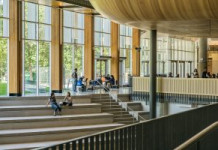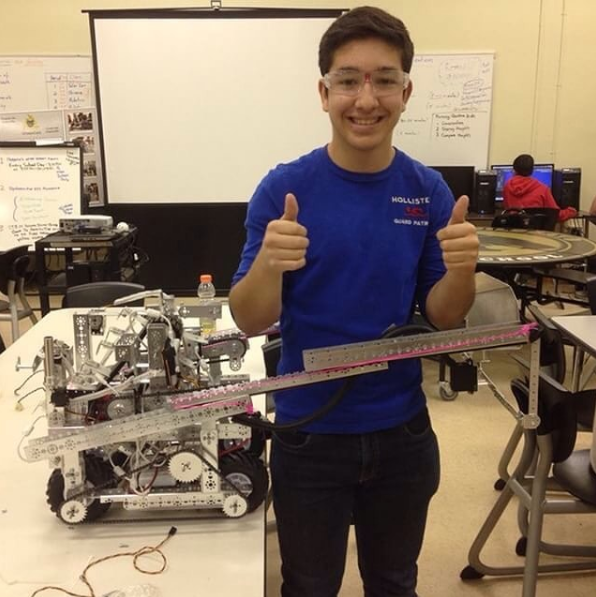By Julio Velázquez
I am part of an amazing organization called FIRST (For Inspiration and Recognition of Science and Technology). The mission of FIRST is to inspire young people to be science and technology leaders, by engaging them in exciting Mentor-based programs that build science, engineering, and technology skills, that inspire innovation, and that foster well-rounded life capabilities including self-confidence, communication, and leadership.

The First robotics program is not only the seed for a more advanced future but the seed for a harder working, confident, intelligent, and graciously professional future. In the last ten years robotics has become more popular and important in the lives of so many people, whether they are in the field, students or just everyday people. We live in an age in which advanced technology is part of our daily lives, this creates greater ties for students to want to be part of the technological movement. Teenagers and even kids in FIRST all have opportunities to learn programing, mechanical engineering, and design form their coaches and mentors, leading on to a possible career in such a field. I have only been in FIRST for two years now, and i have realized that it is not only about the robot or the competition, I have learned that FIRST is a family. You learn so much more than just robotics, and this is also why I believe more people are choosing to join. The organization has grown to more than 44,000 teams today in over 80 countries, involving 400,000 kids and Volunteers filling over 200,000 roles. This shows the amount of people that robotics and FIRST have an impact on. As a student, actively participating in FIRST, I strongly urge all young middle and high schoolers who eager to learn about the future, to join their local FIRST team.
You may also interested in Educational technological advances
The Importance of robotics in today’s world is crucial, and without it, we would not be graced with all of the advancements that have come up in recent decades. Robotics has held it influence in almost every field imaginable. The implementation of advanced robotics in the military and NASA has changed the landscape of national defense and space exploration. Robots have also been influential in the media and profitable for toy manufacturers. Even in the medical field, robotic surgery, or robot-assisted surgery, allows doctors to perform many types of complex procedures with more precision, flexibility and control than is possible with conventional techniques.
It is important to teach robotics in school for various reasons. Teachers can help students learn the art of adaptation through robotics. Make students design robots using only a few parts in the kit supplied to them. This will help them to learn how to plan differently and still come with great results when resources available to them are not sufficient; in other words, they will learn how to adapt. Students also must learn problem solving when at school. As the process of construction of a working robot involves a number of complex steps, students must have problem solving strategies ready to make sure that they don’t fail to complete the job. This automatically enhances their problem solving abilities. These skills can eventually propel students into the technological field, as well as many other career opportunities that would also involve these learned qualities. Overall, trying out robotics is a healthy and constructive activity that should be encouraged by every school.
Sourse: Edition 32 Aldea Magazine




















